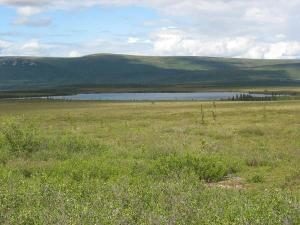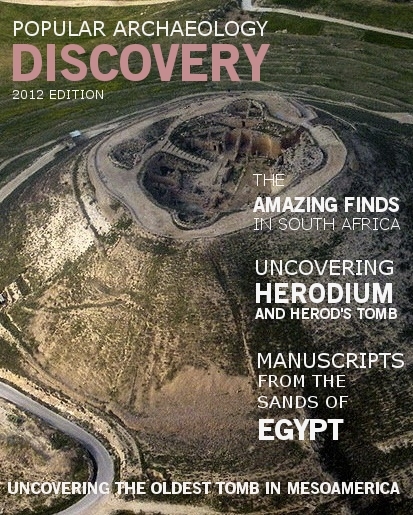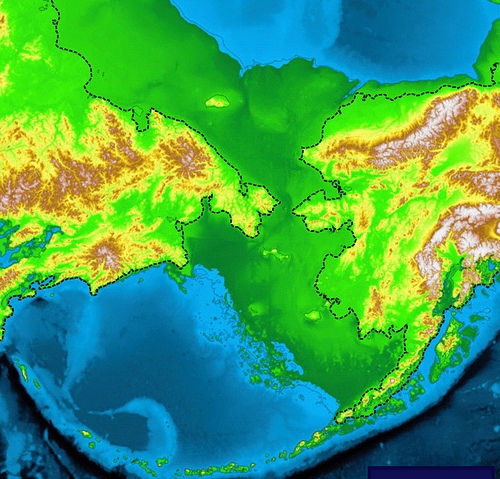
Known as the “Beringia Standstill” theory, it was first suggested by two Latin American geneticists in 1997 and then refined or corroborated by a University of Tartu research team in Estonia in 2007. From a sampling of mitrochondrial DNA from more than 600 Native Americans, they found that mutations in the DNA pointed to the likelihood that a group of their direct ancestors from Siberia was isolated from their Siberian origins for at least several thousand years, during the time period from 25,000 (if not earlier) to 15,000 years ago (when ice-free corridors developed), before their descendants moved into the Americas. Evidence from recent paleo-ecological research suggested that this isolation most likely occurred in Beringia, a land mass that once covered the present-day Bering Strait between northeast Asia and Alaska.
“A number of supporting pieces have fallen in place during the last decade, including new evidence that central Beringia supported a shrub-tundra region with some trees during the last glacial maximum and was characterized by surprisingly mild temperatures, given the high latitude,” said John Hoffecker of CU-Boulder’s Institute of Arctic and Alpine Research, who is the lead author of a Perspective article appearing in the Feb. 28 issue of Science magazine.
This is an important aspect within the overall geographic context of the area, as the last glacial maximum reached its peak about 21,000 years ago with the development of massive ice sheets across North America and Europe, essentially blocking access to North America from northeast Asia until about 15,000 years ago. Thus the ice sheet barrier, along with distance from Siberia, would have created a geographic basis for the gap suggested by the genetic data.
But combining the genetics with the recent paleoecological research, which involved analyzing fossil pollen, plant and insect material taken from sample sediment cores from the now submerged landscape, has been the key.
“The genetic record has been very clear for several years that the Native American genome must have arisen in an isolated population at least by 25,000 years ago, and the bulk of the migrants to the Americas really didn’t arrive south of the ice sheets until nearly 15,000 years ago,” said co-author and University of Utah anthropologist Dennis O’Rourke. “The paleoecological data, which I think most geneticists have not been familiar with, indicate that Beringia was not a uniform environment, and there was a shrub-tundra region, or refugium, that likely provided habitats conducive to continuous human habitation.”
Scott Elias, an article co-author and a professor with the the Department of Geography at Royal Holloway, elaborated: “We believe that these ancestors survived on the shrub tundra of the Bering Land Bridge because this was the only region of the Arctic where any woody plants were growing. They needed the wood for fuel to make camp fires in this bitterly cold region of the world. They would have used dwarf shrub wood to get a small fire going, then placed large mammal bones on top of the fire, to ignite the fats inside the bones. Once burning, large leg bones of ice-age mammals would have burned for hours, keeping people alive through Arctic winter nights.”
On the genetic side of things, the theory that humans inhabited Beringia for as much as 10,000 years “helps explain how a Native American genome (genetic blueprint) became separate from its Asian ancestor,” said O’Rourke.
“At some point, the genetic blueprint that defines Native American populations had to become distinct from that Asian ancestry,” he explains. “The only way to do that was for the population to be isolated. Most of us don’t believe that isolation took place in Siberia because we don’t see a place where a population could be sufficiently isolated. It would always have been in contact with other Asian groups on its periphery.”
“But if there were these shrub-tundra refugia in central Beringia, that [would have] provided a place where isolation could occur” due to distance from Siberia, O’Rourke says.
___________________________________________
This map shows the outlines of modern Siberia (left) and Alaska (right) with dashed lines. The broader area in darker green (now covered by ocean) represents the Bering land bridge near the end of the last glacial maximum, a period that lasted from 28,000 to 18,000 years ago when sea levels were low and ice sheets extended south into what is now the northern part of the lower 48 states. University of Utah anthropologist Dennis O’Rourke argues in the Feb. 28 issue of the journal Science that the ancestors of Native Americans migrated from Asia onto the Bering land bridge or “Beringia” some 25,000 years ago and spent 10,000 years there until they began moving into the Americas 15,000 years ago as the ice sheets melted. Credit: Wlliam Manley, Institute of Arctic and Alpine Research, University of Colorado.
___________________________________________
In contrast to the genetic and paleoenvironmental evidence, however, the archaeological record has been lacking. This would be explained by the suggestion that, according to a number of scholars, the archaeological evidence was drowned under the rising sea levels that resulted in today’s geography of the region. “These shrub-tundra areas were likely refugia for a population that would be invisible archaeologically, since the former Beringian lowlands are now submerged,” maintains O’Rourke. The suggestion that rising sea levels subsequently covered the evidence of human migration into the Americas has also been a long-standing theory among researchers studying the model that advances the notion that early Native Americans moved south along the Pacific coast as the glaciers receded and sea levels rose.
In addition, Hoffecker suggests that the Beringia inhabitants during the last glacial maximum could have made successful hunting forays into the uninhabited steppe-tundra region to both the east and west of central Beringia, where drier conditions and more grass supported a plentiful array of large grazing animals, including steppe bison, horse and mammoth.
There is now solid evidence for humans in Beringia before the last glacial maximum, as geneticists first predicted in 1997, according to Hoffecker. After the maximum, there are two sets of archaeological remains dating to less than 15,000 years ago. “One represents a late migration from Asia into Alaska at that time,” he said. “The other has no obvious source outside Beringia and may represent the people who are thought to have sheltered on the land bridge during the glacial maximum. If we are looking for a place to put all of these people during the last glacial maximum, Beringia may be the only realistic option.”
Hoffecker, O’Rourke and colleagues say new archaeological sites must be found in Beringia if the long human layover there is to be confirmed. Although most such sites are presumed to be underwater, they are hopeful that some evidence of human habitation in shrub-tundra areas might remain above sea level in low-lying portions of Alaska and eastern Chukotka (in Russia).
_____________________________
Source: Adapted and edited from press releases of the University of Colorado, Boulder, the University of Utah, and the University of London.
Cover Photo, Top Left: A photo of Alaska’s shrub tundra environment today showing birch shrubs in the foreground and spruce trees scattered around Eight Mile Lake, located in the foothills of the Alaska Range. Credit: Nancy Bigelow, University of Alaska Fairbanks.
_________________________________________________
Read about the most fascinating discoveries with a premium subscription to Popular Archaeology Magazine. Find out what Popular Archaeology Magazine is all about. AND MORE:
 On the go? Purchase the mobile version of the current issue of Popular Archaeology Magazine here for only $2.99.
On the go? Purchase the mobile version of the current issue of Popular Archaeology Magazine here for only $2.99.
And, Popular Archaeology’s annual Discovery edition is a selection of the best stories published in Popular Archaeology Magazine in past issues, with an emphasis on some of the most significant, groundbreaking, or fascinating discoveries in the fields of archaeology and paleoanthropology and related fields. At least some of the articles have been updated or revised specifically for the Discovery edition. We can confidently say that there is no other single issue of an archaeology-related magazine, paper print or online, that contains as much major feature article content as this one. The latest issue, volume 2, has just been released. Go to the Discovery edition page for more information.
Subscription Price: A very affordable $5.75 for those who are not already premium subscribers of Popular Archaeology Magazine (It is FREE for premium subscribers to Popular Archaeology). Premium subscribers should email [email protected] and request the special coupon code. Or, for the e-Book version, it can be purchased for only $3.99 at Amazon.com.





